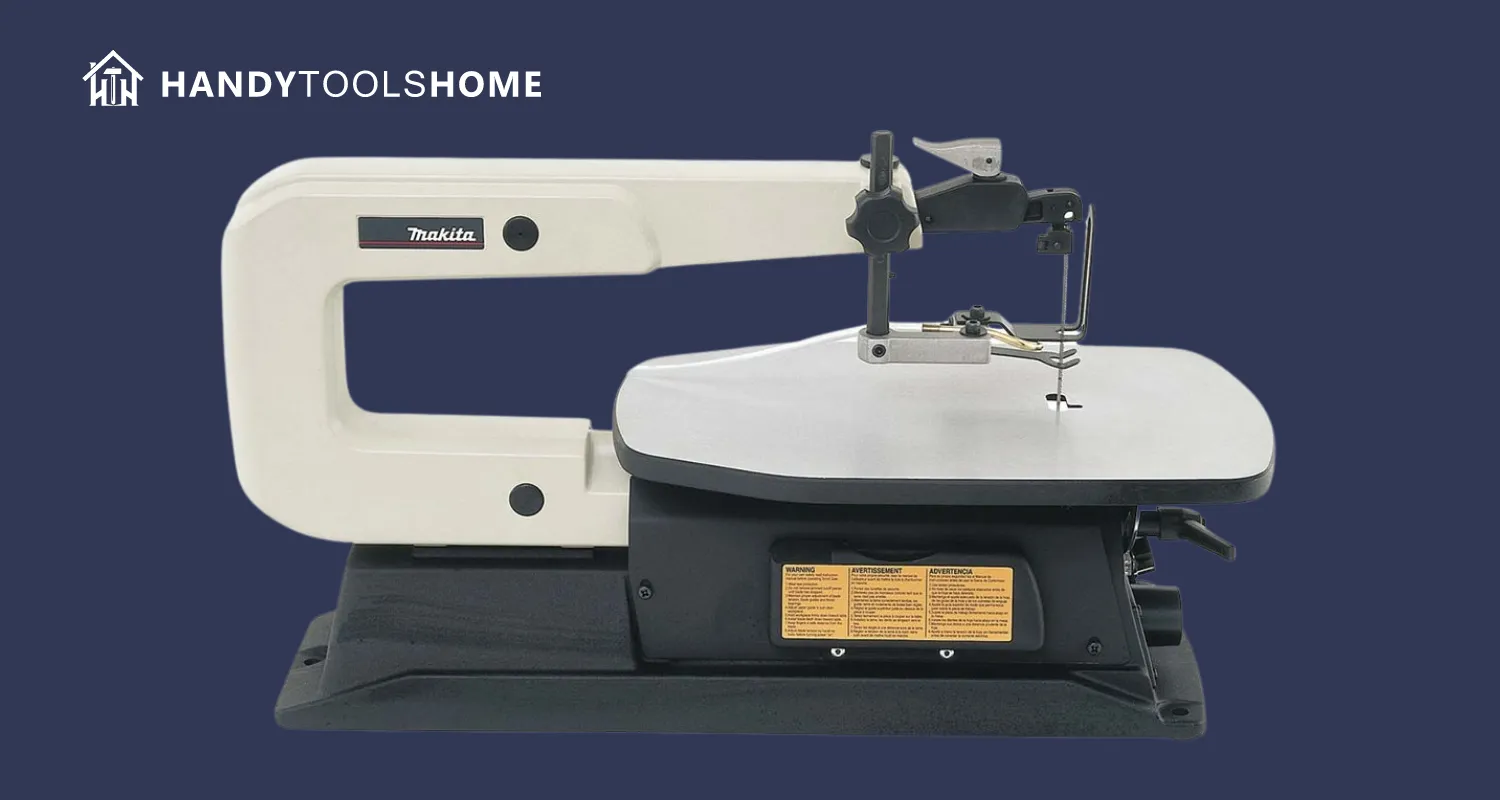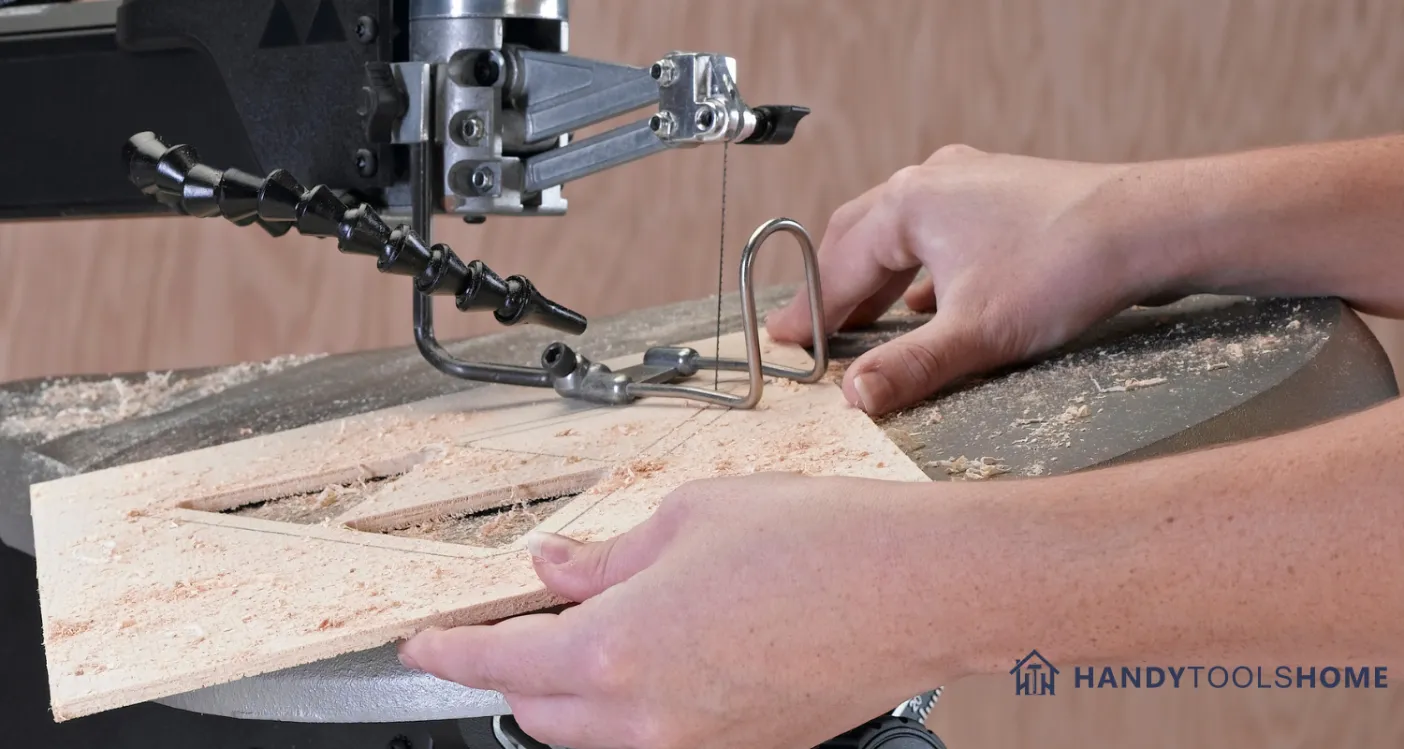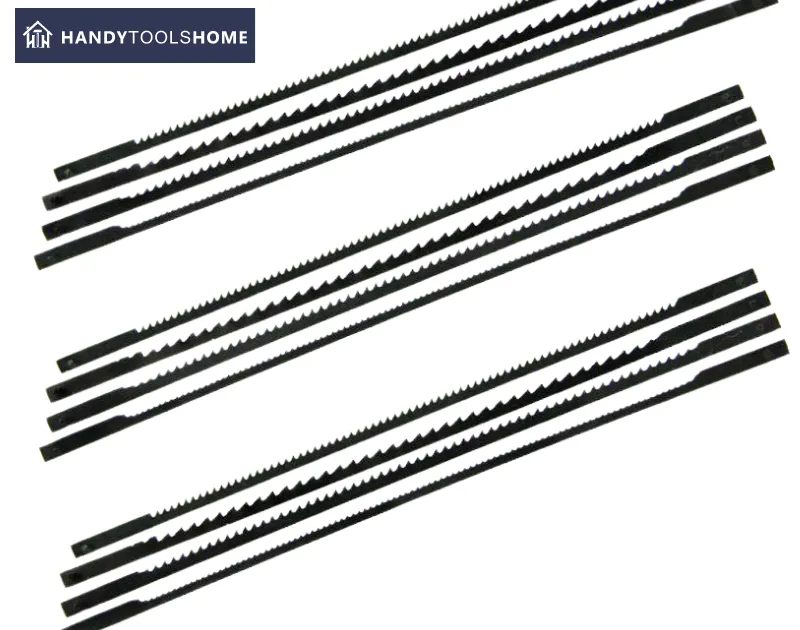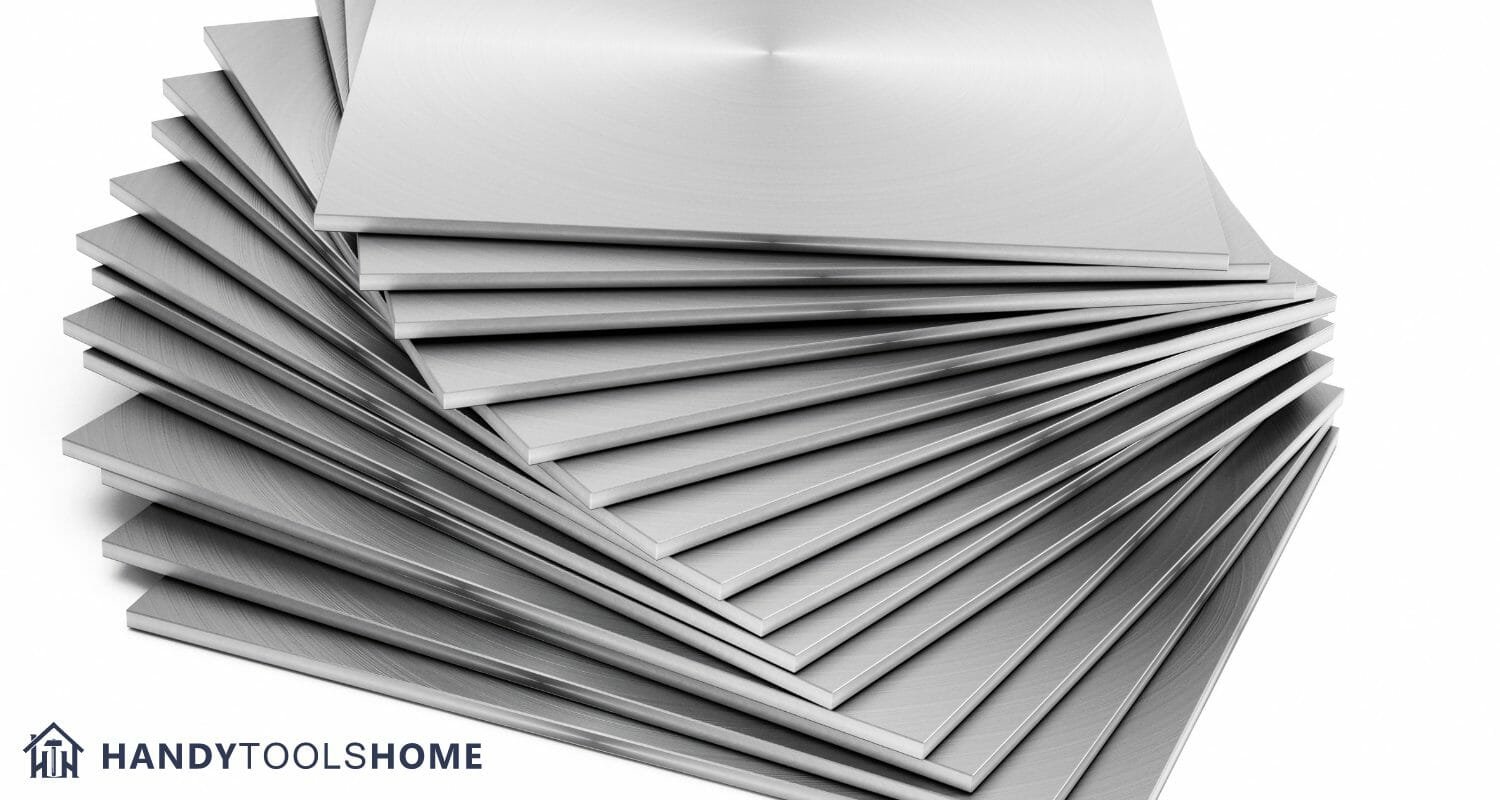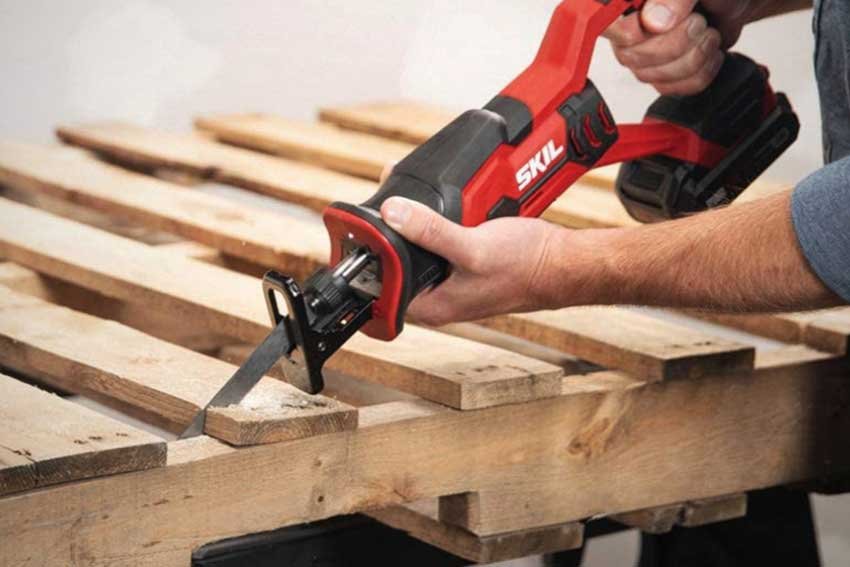How Do You Change A Blade On A Circular Saw Without A Lock?
All you need to do is to unplug your saw, push the blade into the wood, rotate the arbor nut in the same direction that the saw blade rotates, pull off the blade, put on a new one, and retighten the arbor nut.
However, we do not recommend changing your blade solely based on that simple overview. Rather, to do it safely and to do it correctly, you need to keep on reading.
To keep it simple and so you can follow along step by step we have broken the process down into sections. This way you are less likely to miss any essential steps and it will be done as it should be.
Steps To Changing Your Circular Saw Blade
Please follow these 7 steps starting from number 1 to successfully and safely change your saw blade.
- The most essential step. Do not under any circumstances proceed without doing this first. Unplug your circular saw and make sure that it is not still running. To make sure you unplugged the correct one, give it a test run just in case. Likewise, if battery operated remove the battery from your cordless saw pack and test the functionality of the saw.
- Place your saw blade onto a wooden surface. If your circular saw possesses an arbor/spindle locking mechanism then press the button to activate it. If you do not have any kind of blade lock then push the blade into the wood to keep it still. Keep this blade fixed in place throughout the remainder of the steps.
- Pull back the blade guard. Again be very sure that your machine is not able to be activated via any power source. This is especially important to check if using a wireless version where it is easy to forget.
- Determine what kind of saw you have. If it is a worm drive saw, use a wrench to rotate the arbor nut clockwise. If you have a worm drive version then rotate the nut counterclockwise. If you are unsure which version you have then it is usually correct to rotate the arbor nut in the same direction in which the blade turns. Store the nut somewhere where you won’t lose it.
- Remove the blade carefully. The saw is not on, but it can still have sharp edges. Dispose of the old blade safely and place it on the new saw blade where the old one was fastened. Note that worm drive saws have a diamond shape arbor and you may need to knock out the center of the saw blade with a hammer so that it matches the correct shape.
- Use the arbor nut your stored away safely to refasten the new blade. Use the wrench to turn the nut in the opposite direction that you used to unscrew it.
- Push back the blade guard and unlock the blade. Plug it in or reattach the power pack and give your circular saw a test. You have now changed your circular saw blade.
What Tools Are Required To Change The Blade On A Circular Saw?
Generally, the only tools you will need to change your circular saw blade are the ones that already come with the machine.
But because you want to be 100% sure that you have everything before you start it is a wise idea to review the following checklist first.
- First, you need a safe place to work away from pets and children.
- Then make sure you actually have the circular saw with you and you haven’t lent it to a friend or left it at your workplace.
- You will require a solid wooden surface on which you can position the blade to keep it firmly locked in place.
- Don’t forget to get a new blade and to make sure it is the correct size and type of blade for what you need.
- Most circular saws come with a wrench built into or attached to the saw handle. This will usually be either an Allen wrench or a blade wrench that is flat and has either a hole or bend on one side. If you do not have this incorporated into your saw then you may use a small adjustable wrench.
And that’s it! It’s that simple. 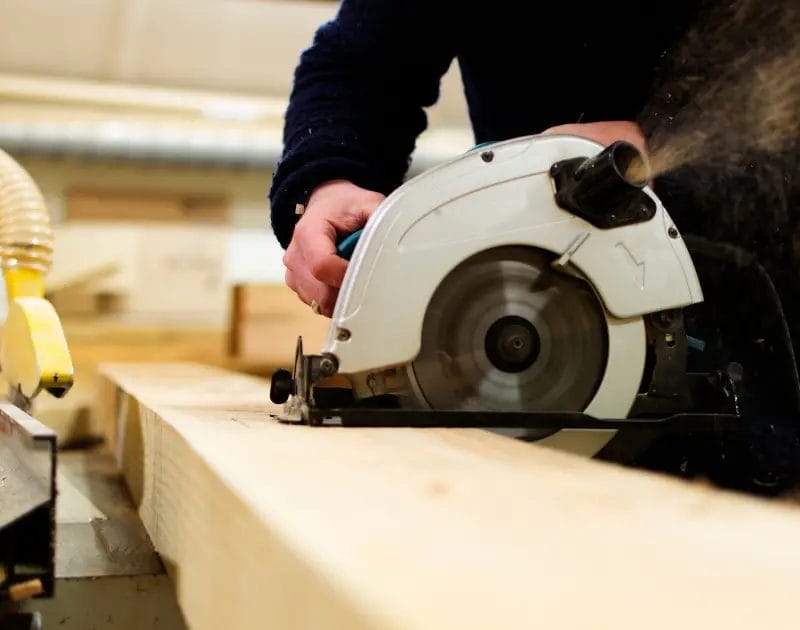
How Often Should You Change A Circular Saw Blade?
Anytime you see or feel that your blade is getting dull or that it is cutting slower than usual or damaging your materials you should change your blade.
All blades have an expiration date. When that is is dependent on your use and blade type. Obviously cutting through harder materials or using the wrong blade for the wrong material will wear out your blade faster.
There are two main things you should know to best determine when to change your blade. The first is the blade type durability and the second is the signs of a blade that is past its best.
Blade Types
There are 3 main blade types commonly available for purchase.
- Diamond-Edged Blades. These are the heavy-duty cutters designed for the hardest of materials. If you want to cut, stone, concrete, tiles, or other hard substances then this is the blade you need. However, durability can vary greatly with this blade. It can last from 12 hours to 120 hours depending on the material it is cutting.
- Carbide-Tipped Blades. The most common blade that you are likely to come across. Useful for most wood applications and some light-duty metal. These are long-lasting hardy blades that usually survive anywhere from six months to a few years.
- Steel-Tipped Blades. These are not as common as they once were as they are the predecessor to carbide-tipped blades. They get blunt almost 10 times as quickly as carbide versions and are much more likely to break.
Dull Blades
Now you know how long the blades can last, it is important to factor in that the quality of the blade and the material you are cutting can cause the blade to lose its sharpness much quicker than you were expecting.
For this reason, you need to know how to recognize when your blade needs to be changed.
The most obvious sign for all blade types is reduced performance. If a Job that used to be quick and easy is now becoming sluggish and difficult then it is a clear sign that something is wrong. 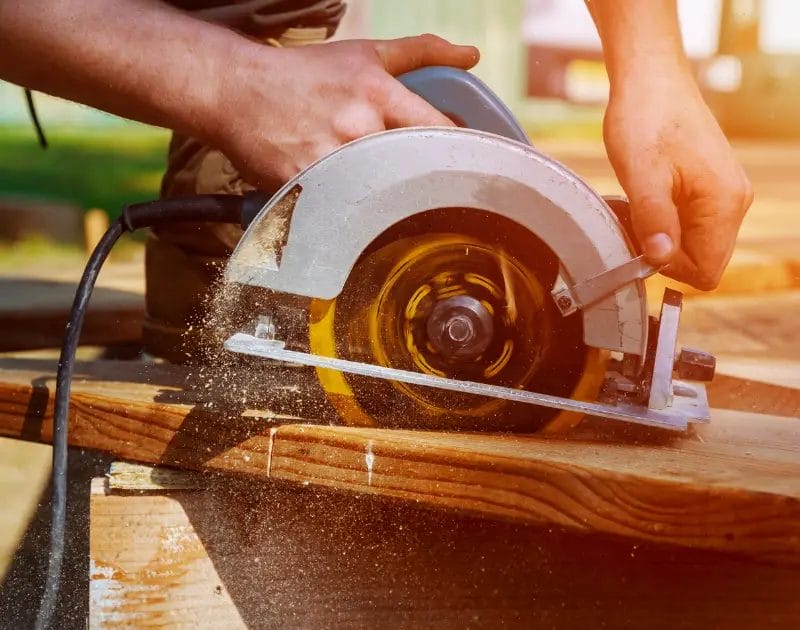
Even if it is not too slow you may find that it kicks back or binds more than normal.
Another sign of a dull blade is damage to the material you are cutting. For example, if you are cutting through planks of wood, it may start to chip or heat up to the point of burning.
If you are using a diamond blade you can find that the rounded blade either becomes glazed over or it appears smooth meaning that all the diamonds have been worn away.
Conclusion
A dull or non-functioning blade needs to be changed as soon as possible. So make sure you have the tools you need, know when it needs to be changed and follow our 7 steps to change your circular saw blade effectively.





